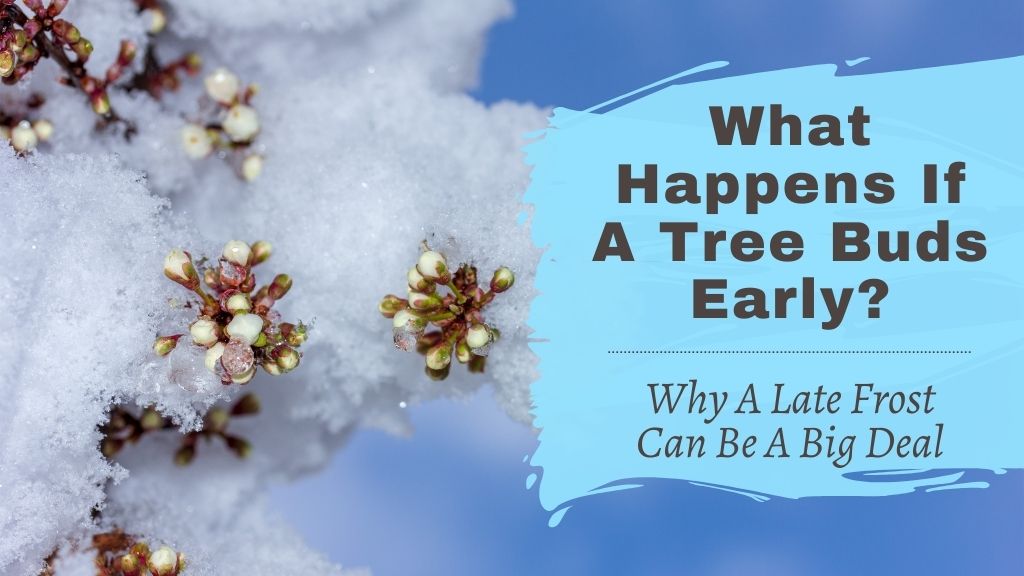Trees are remarkable – they know exactly when to enter dormancy, when to focus on roots, when to break dormancy, and when to focus on flowers, leaves, or fruit. They can tell when to switch to each process primarily by the amount of light they receive each day. This is why trees are the most recognizable change in the seasons – every season means something different in their life cycle.
Our squirrely Maryland weather can be a bit of a problem for some trees, especially delicate cherry blossom trees or fruiting trees. The saying goes, “In Maryland, if you don’t like the weather, just blink.” It really does seem to change that frequently. And don’t forget about the silly “12 Seasons of Maryland” meme that was passed around a few years ago. With all this temperature chaos, what does that do to a tree that changes everything it does based on the time of year?

It’s important to understand how a tree knows when it should start budding new growth – it’s a combination of hours of daylight and ambient temperature. After a certain point in winter, trees sense there is enough daylight to start coming out of dormancy fairly early in the year. But, they don’t respond to that signal until it’s both light enough andwarm enough – cold temperatures will keep that process at bay even if there is enough light.
Once the days are both long enough and warm enough, to trees that means it’s go time, spring has arrived, and it’s time to start growing. Only, what if it isn’t? If there is a warm spell in late winter, or an unseasonable freeze in early spring, both extremes can be a problem.
If a tree breaks dormancy and begins to bud, those tiny buds are much more delicate than the rest of the tree. Dormant branches, bark, and roots are all perfectly suited to handle winter, especially if there is a good blanket of snow for insulation. Not so with tender buds and new growth.

If temperatures drop back below 40*F, give or take, the buds can be damaged. The best metaphor is us, but in a snowstorm. If we get caught outside in a cold storm, but we are protected with thick winter coats, then we’re warm and insulated and we can tough it out. However, if we’re caught in a freezing storm in shorts and a tee-shirt, we will have a much worse time. We’re susceptible to getting a cold, the flu, losing our toes to frostbite, or worse.
The same risk of disease and damage happens to trees with buds and flowers. Suddenly, the tree is more exposed. In the best cases, a tree will lose their buds, rally, and simply produce less flowers and less fruit later in the year. In the worst cases it can stress the tree out significantly. There is a much greater chance of disease or pests making it past defenses and wreaking havoc. A tree dying of frost damage to early buds is rare.

If your tree has begun to bud and flowers are around the corner, but you know a dramatic temperature drop might happen soon, there isn’t a whole lot to do. It’s hard to prevent losing buds and flowers in extreme temperature changes, but you can help insulate the rest of the tree to protect against stress. Mulch the area well if you haven’t already (with a thick donut of mulch around the dripline, not a volcano at the trunk). Water your tree deeply on the last warm day before the cold front hits.

At Patuxent Nursery, we try to bring our delicate fruiting & flowering trees in from southern wholesale sources as soon as we can. It might seem counterintuitive to stock fruit trees in February, but we want them to acclimate to our weather before the days are long enough to trigger a break in dormancy. If they start to break dormancy in warmer southern weather, and then travel north to our grow zone, it poses a greater risk of frost damage to early buds.
As always, if the ground is warm enough to dig you can plant your fruit trees in the ground as early as late February or early March. All plants, even trees, prefer to break dormancy in the ground than in a nursery pot.
Concerned about a fruit tree or spring flowering tree? Contact us and we can see if there is anything we can recommend to help you out.



If the bud is damaged by a late cold snap and the buds are damaged will delay the buddying process and when finally breaks buds will the new leaves be deformed ?
The buds that are already out may get damaged, but new buds should continue to grow that should not be affected.